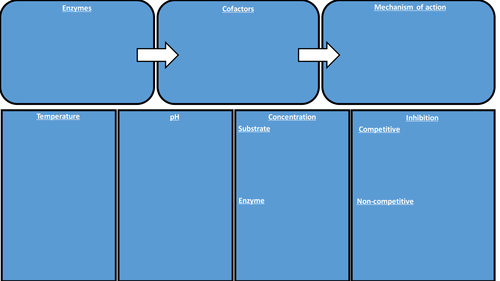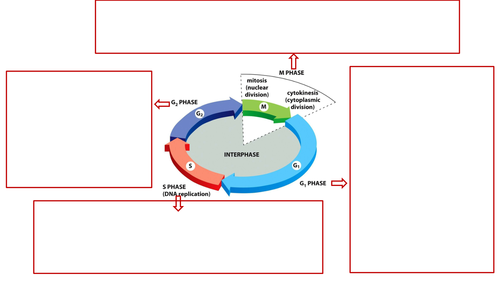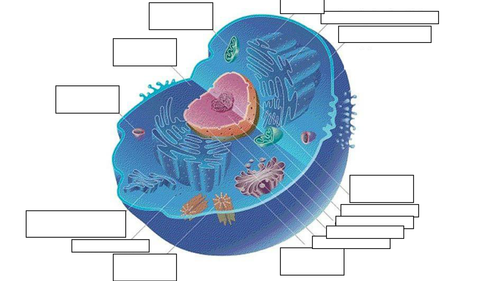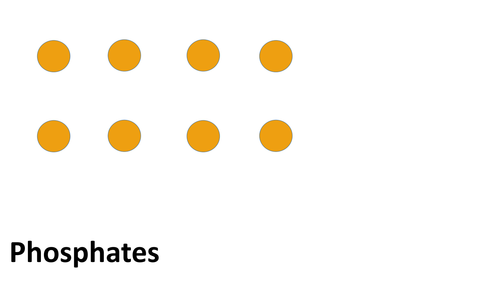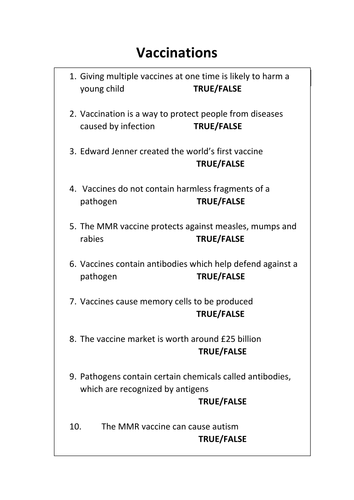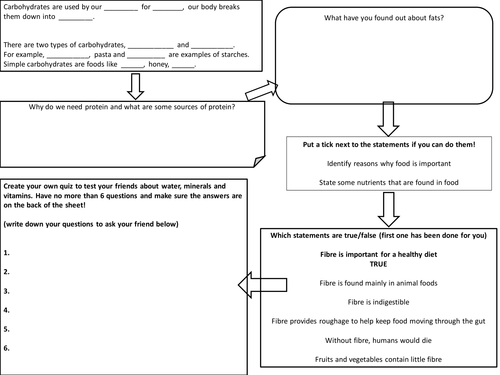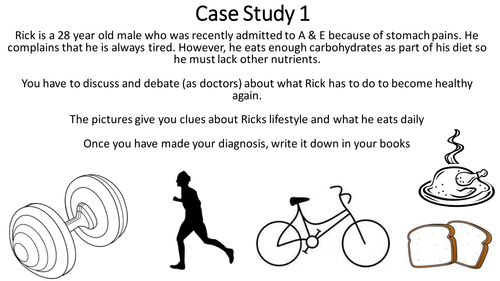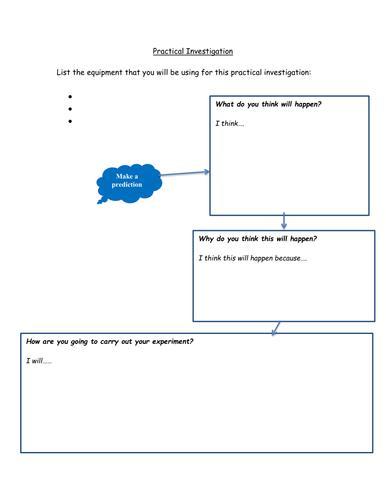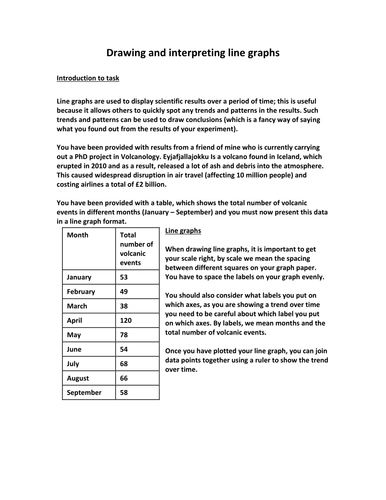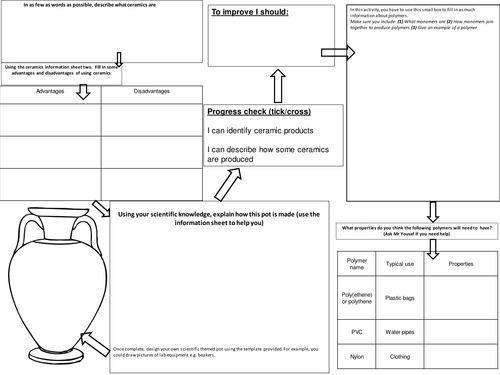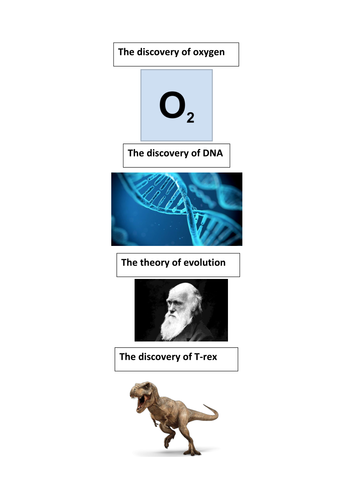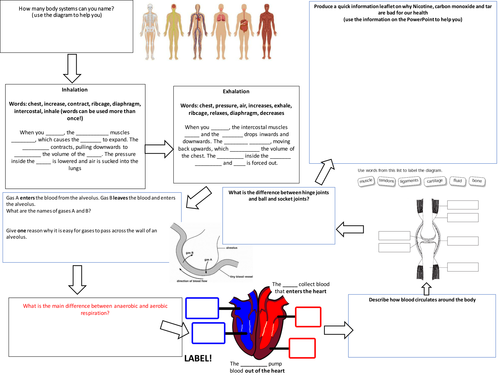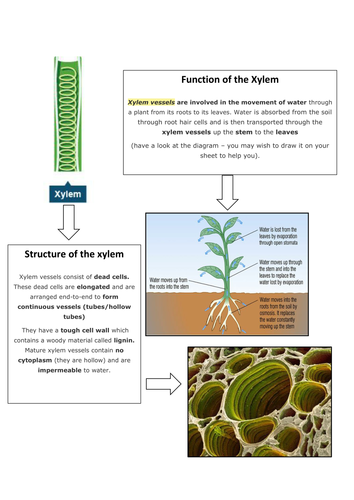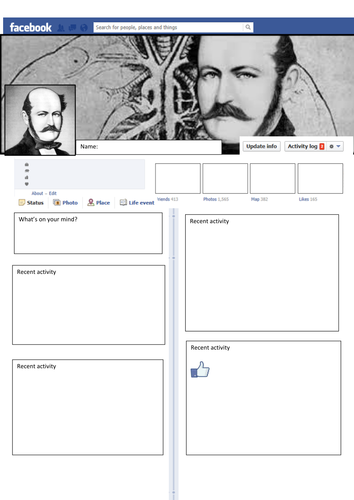
100Uploads
24k+Views
6k+Downloads
Biology

Proteins
Practical booklet which pupils complete - covers biuret test in a different and fun context, where pupils have to find out which sample is the 'real' blood sample (contains the globular protein - hemoglobin).
Suitable for all years and can be adapted very easily via end page (questions are pre-set for AS/A level Biology students but can be changed easily to differentiate for classes you may teach).
Requisition practical equipment (test tubes, blood looking samples e.g. tomato paste, ketchup, paint, order real animal blood etc).
Has embedded peer-assessment, where pupils can comment on how each pupil wrote their report, focusing on particular sections for areas of improvement e.g. for KS3, may not have included all materials and methods.

Enzymes
Suitable for GCSE and AS/A level Biology
Pupils use the sheet (print in A3) to fill in and summarize understanding of enzymes, covers:
Enzyme function
Mechanism by which enzymes carry out their function
Factors affecting rate of enzymatic reactions.

Cell cycle
Suitable for AS/A-level Biology
Pupils fill in the group activity using relevant resources e.g. books, the internet etc.
They can only use pictures in the boxes, they then have to convert the pictures to written information (cell cycle phases fill in table).

Eukaryotic and Prokaryotic cells
Instructions:
Pupils label features of prokaryotic and eukaryotic cells, can split the class in half and use A3-sized diagrams, first team to label the components wins.
Pupils then use the Venn diagram template to label the features, can also enhance this by reviews comparing the features of prokaryotic and eukaryotic cells e.g.
The origin of eukaryotes:
a reappraisal - (Duve, 2007)
Suitable for AS/A-level Biology

Transcription and translation
Suitable for AS/A-level Biology
Includes
Protein factory sheets and protein factory workbook
Using the sheets in groups (e.g. one of each per table) pupils have to work through the sheets by indicating the correct choice and answer questions on transcription and translation (see workbook).
Covers:
Transcription
Translation
DNA replication
Degeneracy of genetic code
Codon-anticodon pairing
The workbook provided is differentiated and scaffolded for pupils via questions having success criteria and also super-challenge questions as well.
Correct answers are on the worksheets, however, ensure that you explain clearly to students that they need to work through it systematically.

Create a DNA template
Suitable for AS/A-level Biology, pupils work in groups and have to cut and stick to create the double helix model of DNA (see slide 5 for WAGOLL).
For each feature (see slide 4), there are points associated with the relevant features being included. This can be used to turn it into a competition between teams/introduce a competitive element.
Covers:
DNA structure
DNA base pairing
Bonding

Cell components
Resource sheets with information on different cell components and booklet style format.
Suitable for AS/A-level Biology

Drugs PSHE
Various activities for teaching drugs in PSHE.
1. Starter > True/false
2. Addiction perspective worksheet > Pupils complete worksheet and have a class discussion about addiction and the impact/consequences of drug use
3. Drugs fill in table > Fill in table with information on different drugs (information sheets attached as PPT - print in A3).

Vaccines true/false quiz
Quick quiz covering vaccination, good as a starter to recap previously covered content.

Vaccination questions
Covers AQA Biology B1, new specification.
Various questions on vaccination with the mark scheme.

Nutrition and Diet
Pupils complete activity mat (print in A3) in groups, sharing the information sheets around (print sheets in A3).
Covers:
All the different types of nutrients
Sources of the nutrients
Has objective criteria, also has extension questions on the information sheets if some pupils finish earlier than others.

Nutrition and Health case studies
Pupils act as doctors and have to diagnose what the patient needs to do to become healthy again. Pupils discuss all four case studies in groups, one of each group then presents their diagnosis to the rest of the class (facilitates discussion).

Revision questions - AQA B1
Covers:
Xylem and Phloem
Inhalation
Structure of a leaf
Reducing spread of disease
Good as an extension activity. Please leave feedback and a review.

Practical worksheet science
Good worksheet that goes through and covers the different aspects of carrying out a practical investigation. Models and scaffolds pupils thinking to help them plan and carry out a practical investigation.

Drawing line graphs - Volcanoes
Instruction sheet for drawing line graphs, provides some data for volcanoes for pupils to use. Good for cross-curricular Science engagement (Geography with HSW).
Works best for KS3, use in combination with line graph drawings on IWB to help model expectations.

Properties of Materials
Covers:
Ceramics
Advantages and Disadvantages of using ceramics
How some ceramics are formed
Monomers
Polymers
Properties of Polymers
Pupils complete placemat activity where they have to fill in the various bits of information. Contains checks for pupils to show progress via self-assessment.
Included additionally:
A composite worksheet, where pupils have to design their own base-layer/composite.
Good for KS3 and KS4.

Stoop effect
Complete lesson on the Stoop effect. Good for cross Science engagement.
Pupils make their own neutral and stoop lists, and then turn this into a practical investigation.

Health and Fitness placemat
Covers various aspects of health and fitness.
Body systems
Inhalation
Exhalation
Alveoli
Respiration
Structure and function of the Heart
Joints
Smoking
Good for KS3 and KS4. Works well if pupils are provided with an interactive resource e.g. Laptops to access Bitesize. Best used in A3.

Xylem, Phloem and Transpiration
Covers AQA new specification GCSE Biology.
Covers:
Structure & function of Xylem and Phloem
Transpiration
Factors affecting transpiration
Practical investigation (examining xylem and phloem under a microscope) HSW.
+ PPT

AQA Reducing spread of disease Ignaz Semmelweiss Facebook activity
Pupils create a facebook timeline on the work of Ignaz Semmelweiss. Covers AQA new specification.


